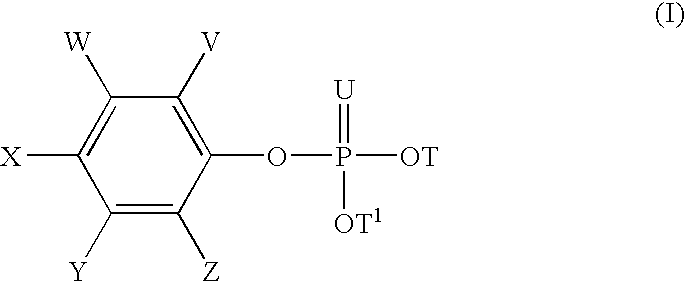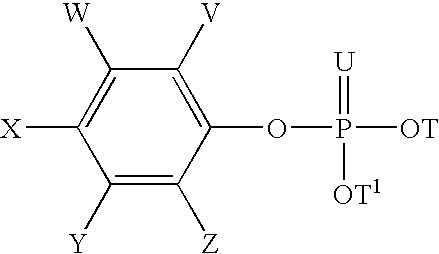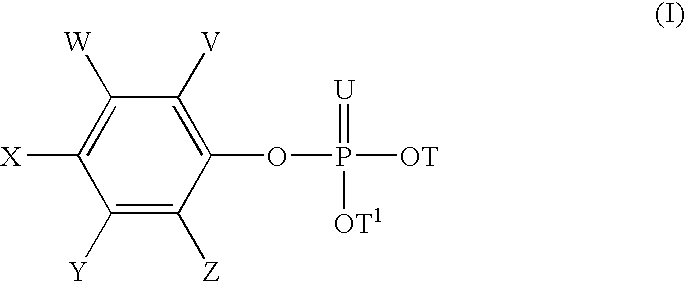Method for safening crops from the phytotoxic effects of herbicides by use of phosphorated esters
a technology of phytotoxic effects and esters, applied in the field of controlling unwanted plant species, can solve the problems of increasing the tolerance of crops to be inadequate, phytotoxic, and certain potent herbicides are not tolerant or phytotoxic, and the use of insecticidal organophosphorus compounds has been banned
- Summary
- Abstract
- Description
- Claims
- Application Information
AI Technical Summary
Benefits of technology
Problems solved by technology
Method used
Image
Examples
second embodiment
In a second embodiment, the safening compound is applied prior to the herbicidal compound. Safening of plants as described hereinabove occurs when the herbicidal compound is applied up to about four weeks later than the application of the safening compound. A preferred application of the herbicidal compound would take place up to about four days later, more preferably about one to two days later.
third embodiment
In a third embodiment, the herbicidal compound is preferably applied in admixture with the safening compound. When the herbicidal compound is applied in admixture with the safening compound, the individual compounds are mixed together and applied in one application to the locus of the plant, or to a locus of where the plant is to be planted. An effective admixture of herbicidal compound and safening compound is prepared independent of the order in which the compounds are combined, and can be prepared at any time prior to application of the admixture. Preferably, the mixture of compounds is applied as a tank mix wherein the admixture is prepared immediately prior to the time of application to said locus.
fourth embodiment
In a fourth embodiment, the safening compound is applied as a seed treatment of plant seeds. The herbicidal compound can be applied independently with respect to the planting of the treated seed. That is to say, the treated seeds can be planted prior to, subsequent to, or simultaneously with the application of the herbicidal compound. Depending upon the compound being used as a seed treatment and the plant seed being treated, the seed treatment can be applied to the seed in any safening-effective amount and at any time prior to the planting of the seed. In a preferred method, the seed treatment, i.e., the safening compound can be applied to the plant seed immediately prior to the planting of the seeds.
A preferred amount of safening compound applied as a seed treatment to the plant seeds is in the range of from about 0.005 weight percent to about 10 weight percent of the weight of the plant seeds. A more preferred amount of safening compound applied as a seed treatment to the plant ...
PUM
 Login to View More
Login to View More Abstract
Description
Claims
Application Information
 Login to View More
Login to View More - R&D
- Intellectual Property
- Life Sciences
- Materials
- Tech Scout
- Unparalleled Data Quality
- Higher Quality Content
- 60% Fewer Hallucinations
Browse by: Latest US Patents, China's latest patents, Technical Efficacy Thesaurus, Application Domain, Technology Topic, Popular Technical Reports.
© 2025 PatSnap. All rights reserved.Legal|Privacy policy|Modern Slavery Act Transparency Statement|Sitemap|About US| Contact US: help@patsnap.com



